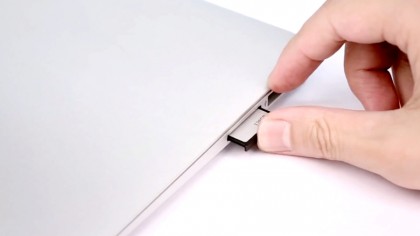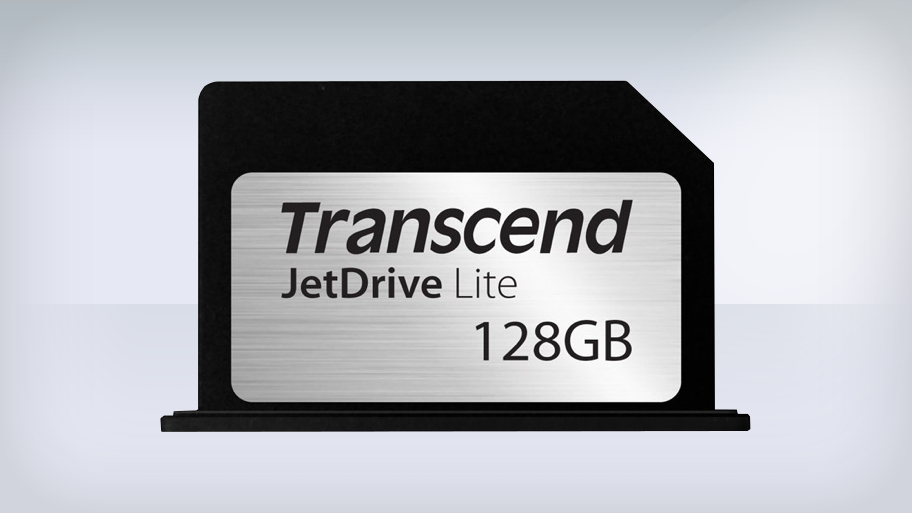TechRadar Verdict
If you're looking to boost your MacBook's storage without breaking the bank, Transcend's highly portable and affordable MLC flash card will do the trick.
Pros
- +
Fast read and write speeds
- +
Price
- +
Snug fit
- +
Useful software
Cons
- -
Inconsistent write speeds
- -
May prove fiddly to remove in future
- -
Not initially formatted for OS X
Why you can trust TechRadar
Notebook and component manufacturers have conquered many obstacles holding devices back in recent years - from Intel's increasingly powerful integrated graphics to roomy, high-resolution displays.
But when it comes to storage, models (particularly Ultrabooks) with more capacious SSDs are still expensive enough to make wallets quiver, and you may find yourself begrudgingly opting for a lower-capacity machine when clicking the "buy" button. That's especially true if you're plumping cash on something like the 13-inch MacBook Pro with Retina, which is near-impossible to upgrade.
This is where Transcend's JetDrive Lite expansion cards come in. Around a third of the size of an SD cards, these MLC flash (a type of NAND memory) cards can boost a 13- or 15-inch MacBook Pro's storage capacity by slotting into its SD card slot. Unlike regular SD cards that stick out of the side, Transcend's offerings can be fully inserted to the point where the card is practically indistinguishable to the machine's edge.
Available in 64GB (£31, around $64 or AUS$84) or 128GB (£64, around $89, or AUS$ 101) capacities, they don't offer anywhere near the storage of external hard disk drives or SSDs, but they have the advantage of being super portable and much cheaper. And because the card doesn't stick out of the machine, there's less chance of it being broken while being transported.

We were sent the 128GB capacity model of the JetDrive Lite 350 to review, which can be used with the Mid 2012 to Early 2013 15-inch MacBook Pro with Retina. It came formatted to the ExFat file format, which is compatible with Windows and Mac.
That's interesting as it assumes that you may want to use the card with a machine that's not a Mac, but it also means that you'll have to format the card to the Mac OS Extended file format if you want to back up its contents using Time Machine in OS X 10.9 Mavericks.
The card can be used with Transcend's recovery software, RecoverX, which can be download for free from the company's website.
Sign up to the TechRadar Pro newsletter to get all the top news, opinion, features and guidance your business needs to succeed!

The only thing that concerned me slightly about the card's design is how well it would fare after being inserted and taken out of the machine in the future after being removed many times. It feels fine for now, but if the the small lip that lets you get a fingernail behind it to prise it out gets too warn down, you could be in trouble. I'd have some tweezers on standby just in case that fateful day ever arrives.
Performance
Out of the packet, the card shows 128.67GB remaining in OS X, with just 9MB used, meaning you get close to the advertised capacity and then some. To benchmark it, we used Blackmagic Disk Speed Test running on OS X 10.9 Mavericks, which benchmarks the disk by writing large blocks of data to disk and then erasing it provide a performance reading.
Transcend claims that both its 64GB and 128GB models have a maximum read speed of 95MB/s and maximum write speed of 60MB/s, and we found that our review card came pretty close. However, its write speeds proved inconsistent, fluctuating from a low of 20MB/s to a high of 55MB/s.
Read speeds were more consistent, frequently reaching between 70MB/s and 80MB/s, topping out at 87.1MB/s. While that's not going to match the speed of even the slowest modern SSDs, it's a decent speed for the kinds of tasks the card has been designed for, which is storing and viewing multimedia files such as videos, music and pictures.
Verdict
The card's inconsistent write speeds didn't put us off what is a great little card, with a functional, no-nonsense design and impressively consistent read speeds. Unless you'll be rewriting data to the card every day and need flawless write speed performance that won't fluctuate (which you'll struggle to find in a card residing in its price bracket), there's very little not to like. There's the possibility that the card may prove difficult to remove in the future, but we can't say for certain at this point, so we'll have to judge it as it is: a well-made, affordable way of fattening up your MacBook Pro's storage capacity.

